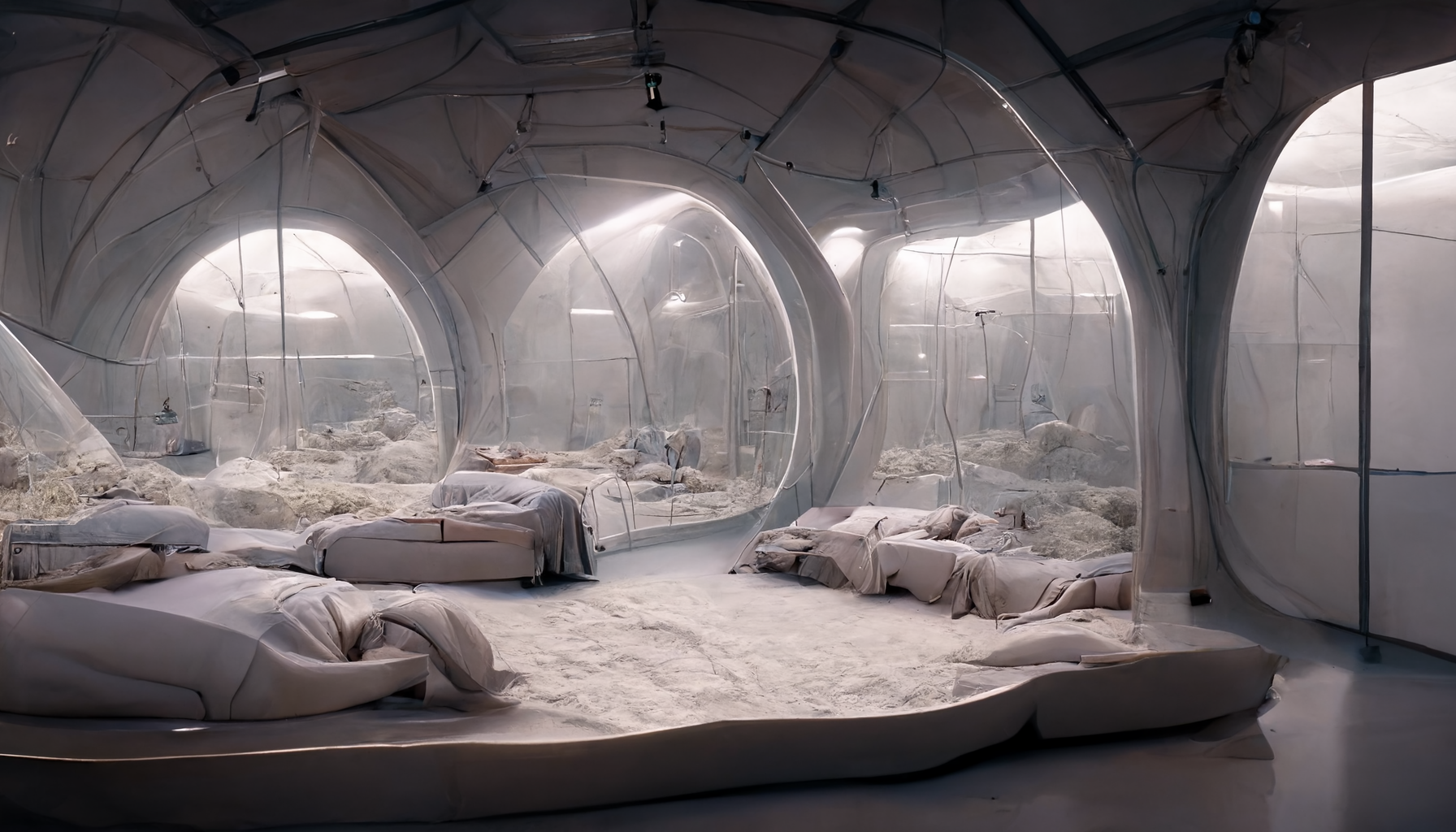The artist and the scientist are planning a new kind of sculpture – made of visitors’ dreams
Carsten Höller has long toyed with the nature of human perception, behaviour and the experience of the art institution. From making his name during the 2000s with the Slide works, which allowed visitors a different take on (and way of moving between levels of) museum buildings, to training people to see upside down, to getting museum visitors to sleep in robot beds that roamed the galleries overnight, the former agricultural scientist creates dynamic works that turn galleries and museums into experimental sites. Now, collaborating with MIT dream-science researcher Adam Haar, Höller is premiering the first in seven ‘dream rooms’ of his Dream Hotel project, the outcome of the artist’s 2021 MIT residency, at the Fondation Beyeler. Each room is conceived to produce a certain kind of dream, from lucid dreaming to nightmares. ArtReview spoke with Höller and Haar ahead of the show, to find out what reshaping peoples’ dreams might lead to.
ArtReview Your new work, Dream Hotel Room 1: Dreaming of Flying with Flying Fly Agarics, which you’re presenting in the Fondation Beyeler’s summer show, is the first iteration – the first ‘room’ – of the wider Dream Hotel project. Back in 2006, in an interview with ArtReview, you said that ‘the real material I’m working with is people’s experience’. How does working with ‘people’s experiences as material’ come into play in this new project?
Carsten Höller People’s experiences, in this case, are people’s dreams. You can book Room 1 during the daytime for 45 minutes to an hour. You can take a nap, or you can also book it for the whole night. Adam is sleeping there for the first time tonight. I will sleep there for the first time tomorrow, and then we have two more guests coming. Then from then on, it will be a regular schedule, but we want to test it first because it’s a new thing.
What happens is, you lay down on this round bed, and you hear a voice telling you that this is specifically created to elicit or reinforce dreams of flying. To dream of flying with fly agaric mushrooms, because while you lay in the bed you look up and you see a replica of a mushroom that literally flies around your head and is lit in a very specific way that makes the shape of the mushroom appear to change, to morph into different forms.
That’s the last thing you see. The bed then starts to move in a similar fashion that the mushroom has been moving. You fall asleep and then, hopefully, you will get into the dreams of flying with flying fly agarics.
But having said that about people’s experiences, it also means that you can still see this as a conventional artwork. That’s important to say at the outset. It’s still a sculpture, but it’s more than a sculpture. It’s not ‘participatory’, which is not a term I like much. It’s a sculpture that has more of a toollike character. You can do something with it that is very specific, and what is required is your bodily presence. It’s not something you can do virtually.

sketches by Alejandro Medina
AR What do you want your user to find in this encounter with this work?
CH A sculpture that is designed to take you away – literally speaking into your dreams and to give your dreams a very specific content. This dream content-production is quite extraordinary because dreams are, of course, related to the memories and to the experiences we had before, but normally there’s very little you can do to give your dreams a direction or to remember your dreams. This is where Adam comes in, because that’s exactly what he’s been working with.
AR Adam, how do you understand the practical possibility of the manipulation of dreams? At one level it sounds intrusive, a little bit creepy to enter one’s dreams and remake them or remodel them. But elsewhere you write about manipulating dreams to benefit memory, creativity and wellbeing.
Adam Haar There’s a very practical answer, which is there are ways you can augment learning, like helping someone dream in Spanish will help them learn the language more quickly. You can help with stroke rehabilitation or limb amputation by helping somebody dream of having a cohesive whole body. You can help with depression by helping someone dream about a difficult event in the past. There are some very clinical answers, but then there’s the idea that a dream is a space where you get to experience the impossible. You get to step into a space that is made of you, but is unfamiliar to you, a space where you get to learn about yourself by inhabiting it.
I can predict in an experimental sense in the lab, so it is the unpredictability of the museum that is as interesting to me. I don’t know if Carsten will have the same language for me as I do around this – but I think, in a sense, neither the artists or the museum visitor is the person in power, but it is the sculpture that gets to shape the experience most. We don’t know what particular dream this person will have, and they don’t know what particular dream they’ll have. What gets produced there is coming from some independent power of the artwork. It’s this in-between, three-agent creation.
AR Carsten, I wonder if such a positivistic outcome is important, or whether you are happy to be a little bit more open or playful about what you think the role of the artwork is here. In many of your previous works, you have toyed with the vocabulary and the methods that have roots in certain kinds of therapeutic culture. But it’s not a professional therapeutic practice. It’s an art practice.
CH We have to consider the fact that we are actually trying to somehow hack into your dreams. Maybe ‘hack’ is too strong a word, which sounds dangerous because dreams are the ultimate private sphere that you have. In the world we are living with, the amount of surveillance of all kinds that we experience in our daily lives, privacy is diminishing constantly. Are we not adding one more level to this and now hacking into your night dreams, the last private sphere that you had? I think that is a legitimate question. Maybe it’s even a kind of statement we’re making with the work, asking ‘how far has this gone’? Now we are going even further and showing that even this, in theory, might be possible. It’s not just a good thing, it’s also a dangerous thing. But at the same time, we all know that dreams and art have a very strong relationship. We just don’t show it, as it has been shown before; we make it happen.
AH To your question about the danger versus the benefits: Carsten and I both have this history in the sciences, and there’s so many tools, whether you think of genetic editing or brain imaging, which have so much promise and so much power, of good or bad. In the science of dream incubation, humans have a much longer history incubating their dreams than they do ignoring them. The last 80 years of ignoring our dreams is absolutely novel and insane. If you think about the deity Bes and the Saqqara necropolis in Ancient Egypt, Asklepios at Epidaurus in Ancient Greece, the onset of the Abrahamic religions. We’ve been dreaming – and not only dreaming, but waking up and sharing communally our dreams – for thousands of years. But we just decided not even a century ago that they weren’t worth our time, that this place where we’re at our most powerful, our most imaginative, our most spiritual, our most creative – we said, ‘Oh, it’s ridiculous. It’s just a dream.’
This is new, and just because something is in absence doesn’t mean it’s a danger. A presence can be dangerous, but the absence of discussion also can hold a danger. I think, of course, we’re playing with something very powerful. Carsten has played with silence and vision, whether Psycho Tank [1999] or Upside Down Goggles [1994 / 2001] because these are powerful things to play with. There’s power.
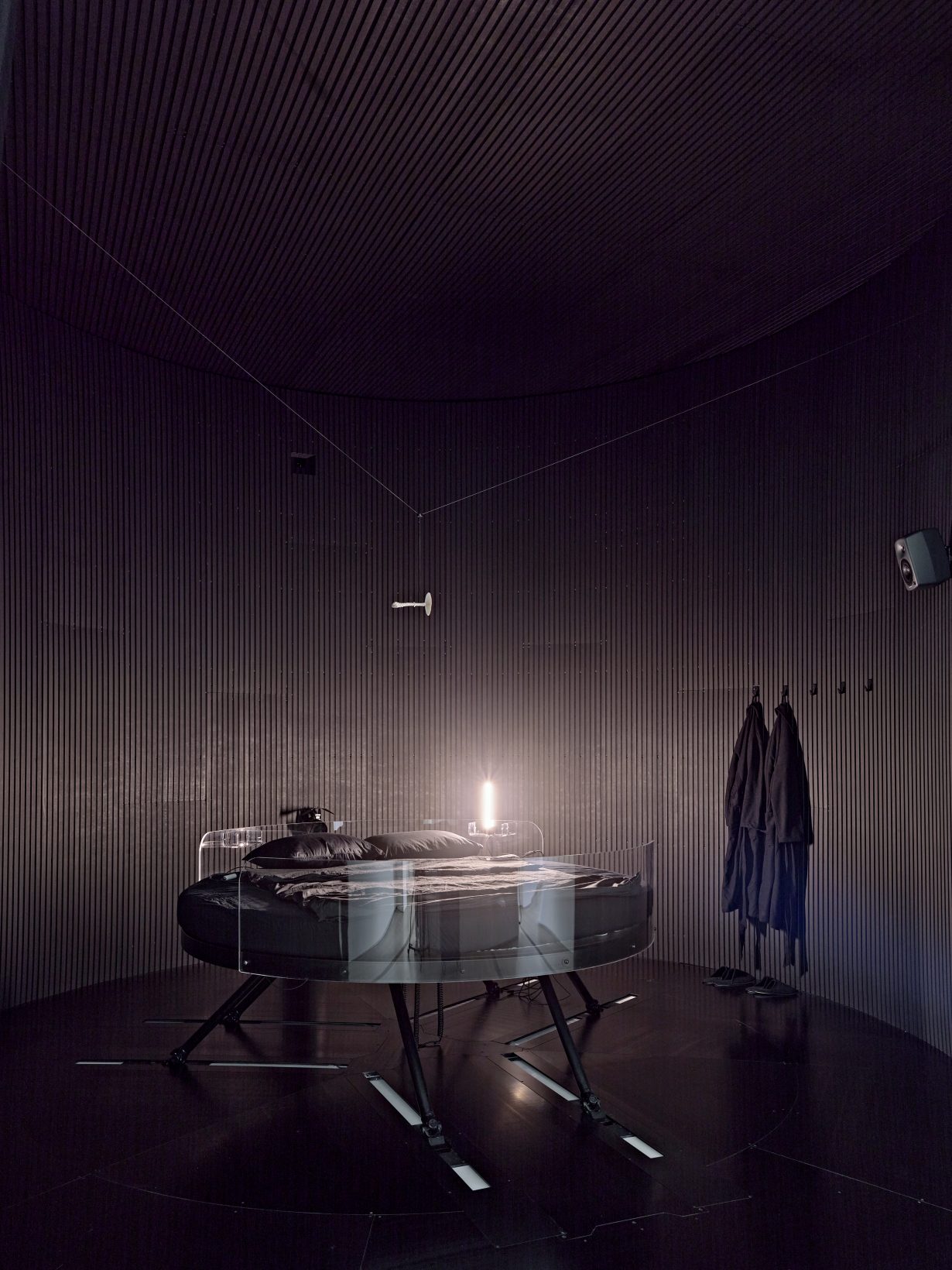
AR There are a couple of questions that come out of that. One is the ethical dimension of science – what uses it can be put to. The other is how science and technology relate to some of the more manipulative aspects of the culture we’re now in: the culture of ‘immersive’ experience, of the experience economy, and how they use and exploit technology. Increasingly, we have museums thinking of themselves as experiences, and they’re withdrawing from the idea of going to a museum to contemplate a work, to have a very individual relationship with an individual art object. I wonder how this project speaks back to where we have got to now.
CH I see these works as a comment on what you call ‘experience economy’, and this new term of ‘immersive art’ installations, which I personally really dislike. I want it still to be a very personal experience. For me, there was one crucial experience, when I went to see the Rothko Chapel in Houston in 1991, it was a very strong moment for me because it was really the power of art that overwhelmed me, all alone in this little chapel. Then I’ve seen a Rothko exhibition since, at the Tate, and it was similar works, but there were hundreds of people, there was audio guides and so on, and it was completely impossible to get even close to a similar feeling.
So many of my works have to do with a form of specialisation. It’s you and the work. It’s not you and an exhibition and hundreds of other people.
Something has happened in the meantime, which is that what we’re doing has become much more mainstream than it was when I started, and certainly since the 1960s or even before. And we still pretend it’s the same format, but I don’t think the format is the same. We have to think about a di¡erent format to make it into a powerful experience again, because like I said, with the Rothko show at the Tate, it’s not powerful. It’s disturbing.
To bring it back to the specificity of the experience and the focus of it, we must go other ways. One of them is that you use the museum as a place where you can do experiments. I think this is a radical experiment. There is also a novelty in the sense that this is a scientific work. It’s really as scientific as it is artistic. I tried to avoid this for a certain period because I’ve been a scientist before and I didn’t want to be the scientist who makes art, but I’m still a scientist. I wanted to be an artist that makes work that has a scientific background. Now it’s really half-and-half, and I find that a very interesting situation. We’re very curious to see what comes out of it.
I call it ‘saturated’. Like a Henry Moore sculpture – poor Henry! It’s nothing negative, I love Henry Moore’s work, but it’s just an example. It’s saturated: nothing really changes. There are big bronze things positioned there. Here, with the Dream Hotel, things are not saturated. They are like a function. The function needs an object or a subject to make the function into an equation. This is a much more dynamic approach.
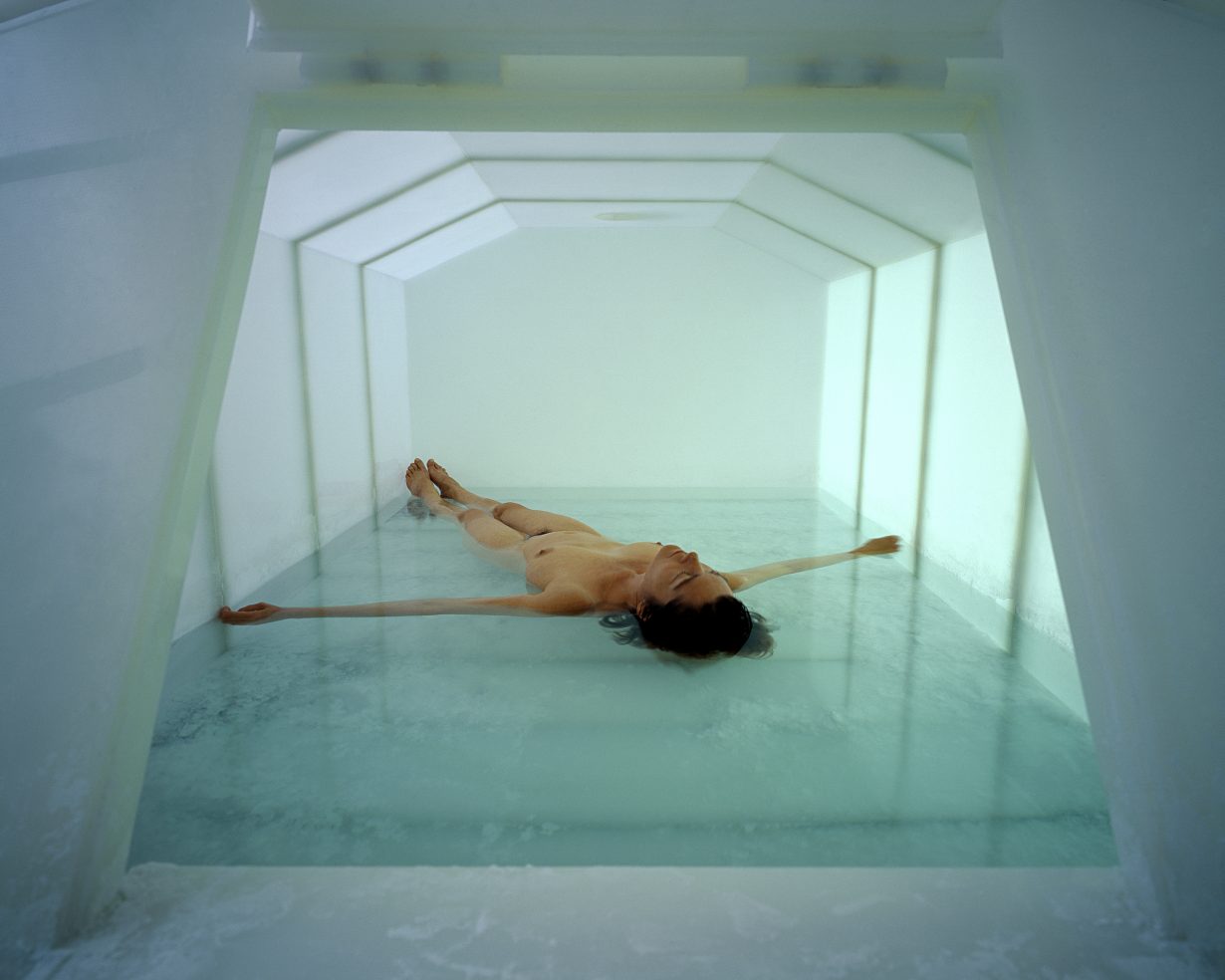
Musée d’Art Contemporain, Marseille). Photo: Attilio Maranzano
AH I was curious about Carsten’s comment about the uniqueness of experience. I have been thinking more about ‘perceptual homogenisation’, this idea that, say, my brother texts me and asks if I saw Joe Biden say this thing, as if we both have seen it at the same moment in different parts of the globe. This idea that we can have one eyesight and how bland that idea is for humanity. I think about the perceptual homogenisation with the internet and with ChatGPT – they call it enshittification of the internet, where it’s training on itself and on us. The process becomes so normalised until my Gmail suggests the end of a sentence that would be most average and most appealing to the person I’m sending it to.
I think dreams are a real respite from the possibility of homogenisation. There is no normal dream. They are universally abnormal. That’s really wonderful for an approach for people to value again what is abnormal in themselves and in others, to encounter it and to have to deal with that. I think so much these days of what I see and hear is catered towards me not having to deal with very much that falls outside of a status quo. Dreams don’t behave. They won’t behave for us as we build this work, and they won’t behave for you when you come and lie down in the bed. There’s something really powerful about that in an age where uniqueness is being compromised.
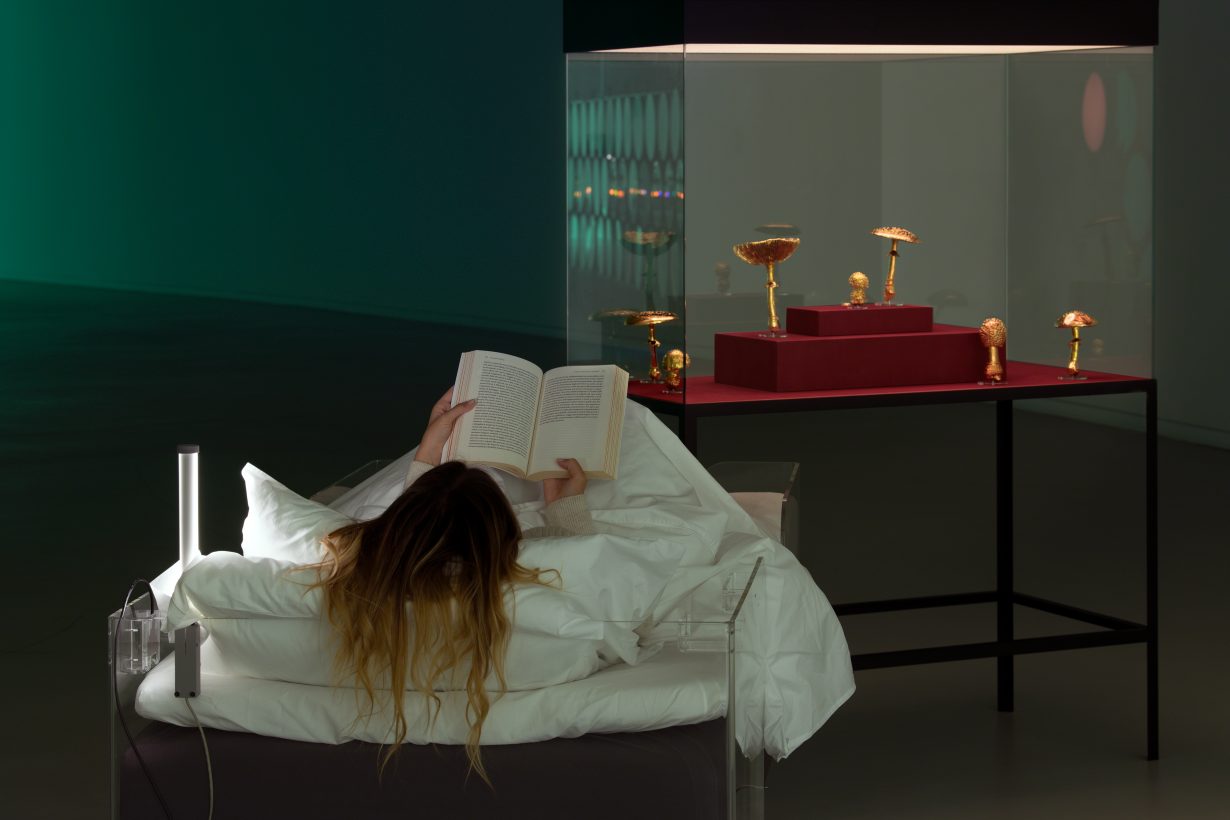
Photo: Attilio Maranzano
AR These themes that you’re working with occur in a culture that is already in over its head with the commodification, through technology, of the conscious and even subconscious mind. With the rise of social media and its algorithms, scientists of human psychology, and human response and behaviour, are intent on seeing into us and seeing what we are about and what we want. There’s a clear relationship between the culture that we are very steadily working our way into now and such an approach to an artwork.
What’s interesting when talking about homogeneity is that this is the first of a set of possible rooms. There seems to be a sense of humour to specifying and demarcating certain kinds of experiences – that I might actually choose to go to the ‘nightmare’ room as opposed to the ‘flying’ room.
CH As if it would be already possible to choose exactly what you want! You want to dream about flying? Or you want a dream about being a plant? One of the things Adam said at the very beginning that really struck me: he did these dream experiments with people sleeping in the lab. He said what they dream about when they sleep in the lab is… sleeping in a lab!
I can’t even tell you how much this project has influenced my own dream world. It has changed how I go through the night. How I wake up and how I carry around my dreams with me. Our idea would be to make a dream hotel which is a bit like a circus. It consists of a number of rooms, each of them designed to elicit specific dreams and maybe to make you remember your dreams better. We even want to work on a new room where you share your dreams with other people, so you dream the same dream at the same time. It should be possible for this hotel to move from city to city, spend a certain time in the city, allow people to come there, book a room and dream in specific ways, and then move on. That’s our plan.

AH I think Carsten’s experience there is really revealing and it’s completely typical. You can take a hugely simple tool, something like a dream diary or something like having somebody sleep outside uncovered, or something like drinking a specific tea before bed. It doesn’t have to be complicated. It can be as simple as coming and sleeping in the sleep lab and people will find that their mind is much less in control or predictable than they thought it was during the day.
Social media input, the barrage of attentionseeking, the perceptual homogeneity – I think these things are a thin pool cover on top of a sea of monsters and creatures. You can lift the cover a little bit with a practice as simple as paying attention to dreams during the day, so that at night your brain records more of those dreams because you’ve made it think that they’re important. Dreams have become a huge part of the way I think and the way I see. All this is to say that I think that the pool cover is suffocating and enveloping, but very thin. If you help people lift it up, there is something that is fear-inducing and intense and very old and in you, just below the lid of perception. I think an artwork as simple as this, with a night in there, can show people a part of themselves they’ve really never seen before.
AR I think in Carsten’s work there’s always a questioning of the difference between being a subject and an object. It’s playful and perverse in the sense that it exposes you to questions of choice – what you can choose and what you can’t. This also seems to be an extension of the idea of presenting people with something that we traditionally think we are not in control of, but in fact we are. To relate it to some of Adam’s points that the twentieth century’s view of the dream world is that it’s a risky place that one enters cautiously, I wonder if we’re now starting to kind of turn to a much more practical approach to not being so scared, and to choose to have some control over things?
CH It’s an old artist dream that art can influence life. We’ve been discussing this for centuries, and now we’re back to this whole topic again. If it does change your life because it makes you dream differently, and in some way you become a different person, that’s very interesting and maybe also scary, because once you’re in [the dream] there’s nothing you can do.
You have to trust us that we’re not going to harm you. But we are honest, we don’t know what’s going to happen. That’s why we are the first ones to sleep there. Maybe it’s a completely horrifying experience; maybe it’s the most wonderful thing in the world, we don’t know. That’s maybe the old scientist in me who’s very curious.
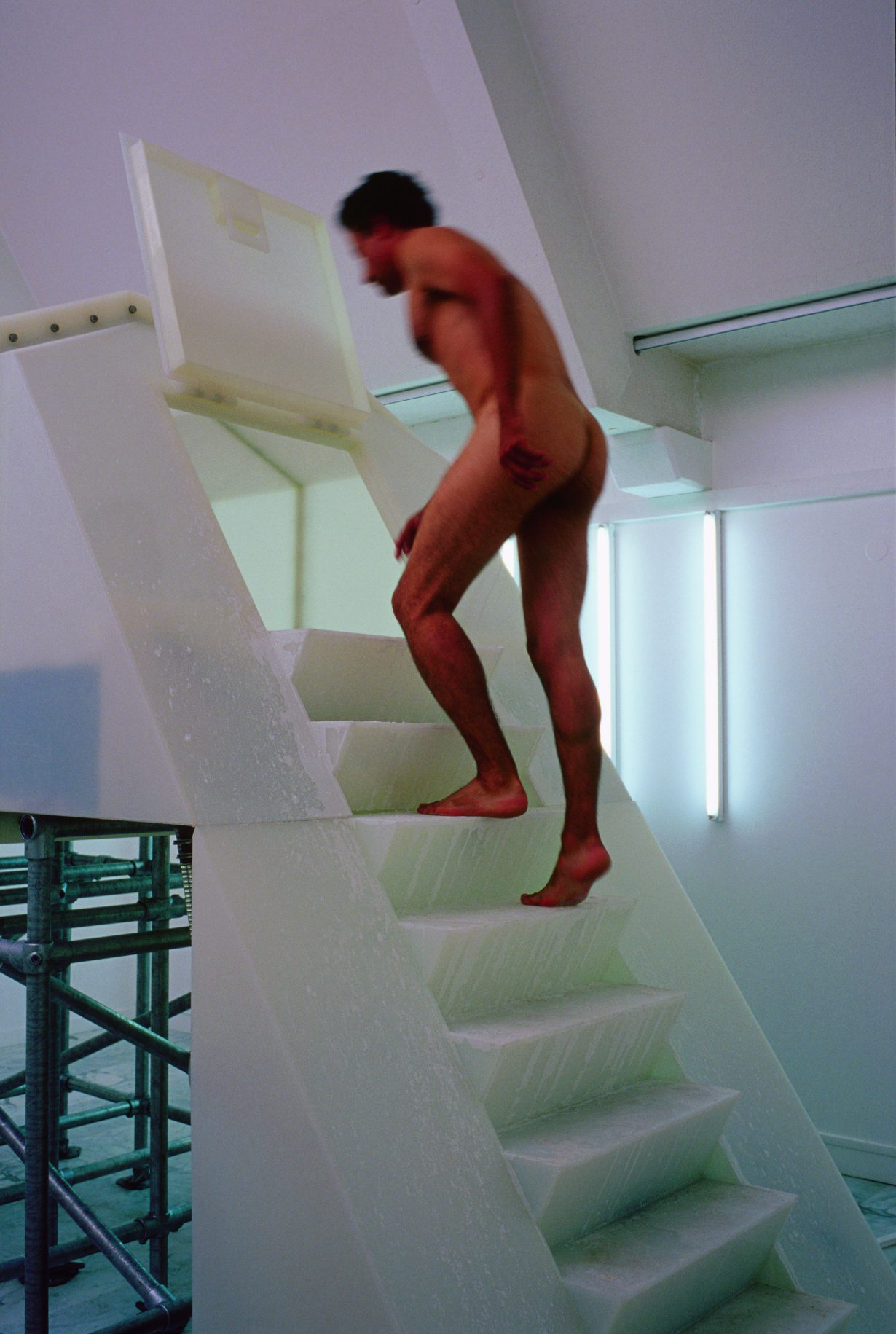
Musée d’Art Contemporain, Marseille). Photo: Attilio Maranzano
AH It’s not only that we don’t know, and that it’s the first time this has been done in an artistic space. In the dream science space, people have been curious about flying dreams for quite a while. There’s flying dreams in traditional Chinese medicine, in old Egyptian traditions of [dream] incubation. When you talk to people, so often they’ll say, ‘Oh, I remember my flying dreams I had as a child. They were so, so full of joy and I lost them.’
For instance, my dad is in his seventies. He said, ‘Oh, they were my favourite thing in the world. I felt so free, I felt so alive, but I haven’t had them for 60 years.’ He remembers them so clearly. To give these back to people would be really beautiful. There’s the scientific question, which is that there’s been a lot of interest in dream science, but there’s been one study on incubating flying dreams, which is where we got part of our inspiration, from a scientist named Tore Nielsen – one of his students helped us make a video for dream incubation of flying dreams.
This is totally new. Nobody in the world has tried a moving bed on a hexapod base! We can really ask a new scientific question, which is really exciting. When we talk about the kind of questions of where we want this to go and what kind of questions it will raise, the idea of writing a scientific paper about a piece that has been inside of a museum is interesting in terms of mixing and meshing these worlds in these languages.
CH We’re both excited about what this will be. We will actually never really know, because it’s people’s dreams. Nevertheless, we have a thing that we are looking forward to, which is going to be what this does to us and to other people.
Carsten Höller with Adam Haar, Dream Hotel Room 1: Dreaming of Flying with Flying Fly Agarics is on view in Dance with Daemons at the Fondation Beyeler, Riehen/Basel, in a partnership with LUMA Foundation, through 11 August
